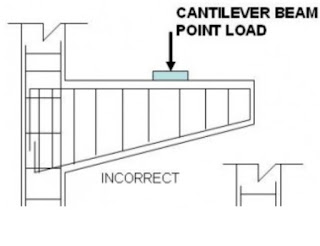
LIMIT STATE OF COLLAPSE IN SHEAR - - The shear stress develops in beam due to longitudinal- transverse displacement. Shear stress distributions (a) Ultimate stage - doubly reinforced concrete singly reinforced beam (b) Elastic stage - shear in RC beam resisted by following sections - 1. Dowel action of main steel 2. Aggregate interlocking 3. Uncracked sections Critical section for shear - (a) When supports are in Compression - - In this case , critical section occurs at 'd' distance from face of support. Supports in compression (b) When supports are in tension then critical section occurs at f...





